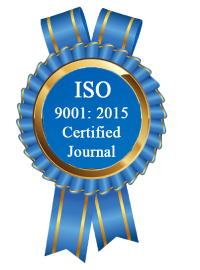| All | Since 2020 | |
| Citation | 172 | 110 |
| h-index | 7 | 5 |
| i10-index | 1 | 0 |
WJERT Citation 
Login
News & Updation
Abstract
IMPACTS OF LAND USE ON INFILTRATION
A. O. Ibeje*, J. C. Osuagwu and O. R. Onosakponome
ABSTRACT
Land use can affect natural ecological processes such as infiltration. There are many land uses applied at Ikeduru L.G.A. in Imo State, Nigeria, thus, the area is selected as a case study. The objective of study is to determine the effects of land use on infiltration by three different land use types; 34 of them are in farmlands, 34 in Bamboo field and 32 in forestlands. Within each land use type, multiple regression are used to determine degree of association between the rates of infiltration, moisture content, porosity, bulk density and particle sizes. Non-parametric Kruskal-Wallis analysis of variance is used to determine whether significant differences in infiltration rates existed between different land uses. The mean steady state infiltration rate of farmlands, bamboo fields and forestland are 1.98 cm/h, 2.44cm/h and 2.43cm/h respectively. The regression model shows that infiltration rate decreases with increase in moisture content and bulk density but increases with the increase of soil particle sizes and porosity. The most important multiple regression variables is % porosity. The differences in infiltration rates between different land uses are not significant at the 95% confidence level.
[Full Text Article] [Download Certificate]
